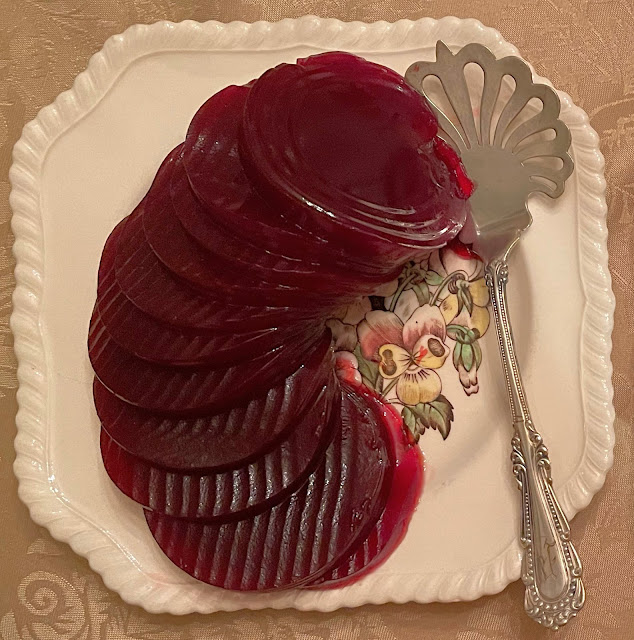
Meet Gabriela Angelica Rostani, a Blue Ribbon Award winner from our Second Annual International Place Setting Competition. Gabriela is shown sitting at her Edwardian era place setting.
🍽🍽🍽🍽🍽🍽
Gabriela was born in Uruguay, but has spent her life in Italy. Always interested in image, wardrobe, fashion, jewelry and etiquette, her career path has seen her seek out training in all areas of cultural and diplomatic development. Following a degree cum laude in International Relations - Diplomatic and Consular Sciences, Gabriela undertook multiple work experiences in the international arena that led her to study the field of cultural diplomacy in-depth.
Her expertise in personal branding and business etiquette, the “anthropology of the table” and royal etiquette, along with the larger fields of study of manners and ceremonial etiquette, has led her to found her own school and teach various image enhancing and personal development courses. She consults for individuals, schools, institutions and companies. She is a member of ANCEP (Association of Ceremonialists for Public Institute) among other notable international associations. Congratulations Gabriela, on your Blue Ribbon win!
The monochrome table linens and dishes give this middle-class Edwardian setting a subdued and pristine appearance. It would have been wonderful to see the colorful foods come to life, plated at this setting. The white with the silver trim is the perfect background for highlighting the inviting menu’s culinary selections. The trinket box above the plate was not explained, so we guessed this was a table favor or gift of some kind.
Menu for an
Edwardian Era Dinner in Tuscany Italy
Extra virgin olive oil cream with spun-curd cheese
Served with white wine
Agnolotto (small semicircular raviolo) with maize porridge
and overcooked beef
Served with red wine
Knuckles of ham stuffed with guanciale (bacon) and mustard berries
Served with red wine (timed to exactly when it will bring out the flavors best)
Nut chocolate mousse with cocoa bean biscuits
Grapes from the garden
Brought with finger bowl
 |
Gabriela’s mouthwatering menu was perfect for a modest dining room of the time period, however, her choice of faceted crystal stemware was an interesting one, as the stemware and flatware should generally compliment one another. Gabriela explained her choices this way, “After centuries of attention placed on culinary and receiving manners of the courts and privileged classes, the simpler people felt the need to imitate the habits at the table, but in a much simpler and more accessible way. That's why in the choice of tools, I opted for objects that were as simple as possible in common materials (as in the case of silverware). At the same time, since the early 19th century in Tuscany, there has been a flourishing production of objects engraved in white glass according to the tradition of Bohemian crystal, the presence of glasses and crystal objects testifies to the growth and development of this important processing.”

Another view of Gabriela’s setting — Again, it would have been nice to have the setting in use, with wine in one of the glasses, or even in the wine carafe, to see how the color and light played off one another. It is possible the stemware choice was perfect for this setting, but not having wine in them, we can only imagine.
|
1. How did you choose the menu and various elements you used in your setting and why? Please explain each of the utensils in your setting… For which of the foods on your menu (or course) was each different item intended?
To set the table I imagined to jump right into a special evening in a Tuscan family during the Edwardian Era. In that period, there was a phenomenon of imitation of the “noble art of the table” by the middle class. After centuries of attention placed on culinary and receiving manners of the courts and privileged classes, the simpler people felt the need to imitate the habits at the table, but in a much simpler and more accessible way. That's why in the choice of tools, I opted for objects that were as simple as possible in common materials (as in the case of silverware).
At the same time, since the early 19th century in Tuscany there has been a flourishing production of objects engraved in white glass according to the tradition of Bohemian crystal, the presence of glasses and crystal objects testifies to the growth and development of this important processing.
Crystals and ceramics show the desire to demonstrate the increasingly growing purchasing power of bourgeois families.
Menu is typically Tuscan, based on locally production and high quality raw material. The larger fork is intended for meat, which needs a larger cutlery. There is only one knife, intended for meat (the pasta does not require cutting). The dessert is spooned, being an evening event, and grapes are normally eaten with the hands.
Both the glass of red wine for meat and the finger wash arrive at the time of the corresponding dish (as the etiquette teaches).
2. Why did you choose this particular period in time to set your table?
I chose to take care of the Edwardian Era because it represented a moment of impactful change in architecture, fashion, lifestyle and manners. Economic and social changes also created an environment in which greater social mobility was achieved than ever before. The economic opportunities of the middle classes are increasing, thanks to rapid industrialization. In the field of table education and nutrition, an important literature begins to deal with bourgeois social classes for the first time. For this reason, I wanted to think about how a bourgeois family of the time could behave, far removed from the dynamics of the “palace”…but, at the same time, being careful to imitate the model of the nobles!
3. How, if at all, did Covid-related social restrictions affect your choice of setting? Were you ready to celebrate? Feeling in the mood to do something different? Etc…
No, Covid did not interfere with my way of setting the table. Surely we all felt the need to meet again, especially at the table. I went through this difficult moment with my husband and my children, experiencing the beauty of the simplest things. We should not forget how valuable relationships are and take better care of them in the future.
4. Have you always enjoyed a properly set table? Or, if not, was the table setting something you learned to enjoy through your social life and/or business later on in life?
I have always shown a great interest in the “art of receiving” and good table manners. From an early age, I was educated to have good behavior at the table, which necessarily requires care in setting up and in welcoming guests. I remember that from an early age, I was committed to setting the “family table” with details and attention, above all during the most important events.
I have always had a passion for collecting rare instruments or instruments suitable for every single situation. Over time, I then learned the basic techniques and rules. Today I also deal with setting up tables during institutional events, following the strict ceremonial rules.
5. Did you do any research on table setting etiquette before setting your elements at the table?
Yes, I always do research on new setting the table manners, on details and on various historical periods. Everything is a source of study and learning. There is always something new to learn! I consider Maura Graber's texts unique and special, as well as the contents of the Etiquipedia blog and website.
6. Do you plan on entering again next year?
I'm sure I want to participate in the competition again next year! Maura J. Graber and Elizabeth Soos are the greatest experts in the world and it is very inspiring for me to be judged by such experienced staff.
Elizabeth Soos and I would both like to congratulate Gabriela on her award winning setting. We are honored that she entered our contest and love meeting others who are so willing to share their talents, enthusiasm for etiquette, and their wealth of knowledge. Congratulations!
🍽️Etiquette Enthusiast, Maura J. Graber, is the Site Editor for the Etiquipedia© Etiquette Encyclopedia





















